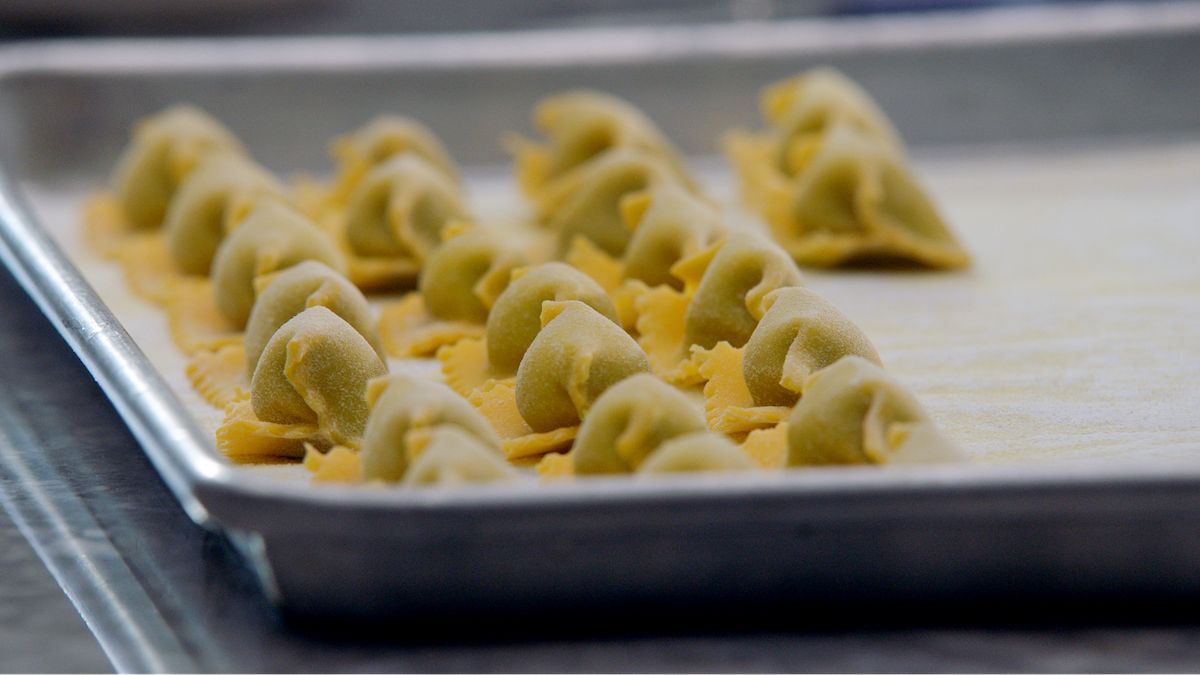How to Make Agnolotti With Chef Thomas Keller
Written by MasterClass
Last updated: Nov 27, 2025 • 4 min read
Agnolotti are stuffed pasta filled with a “farce”—or filling—that can be made of cheese, meat, fish, or a combination of those ingredients. The pasta style originated in the Piedmont region of Italy. They’re made from a rich, egg-based pasta dough that can be thick or thin, but is always pillow shaped. Agnolotti al plin, or “pinched” agnolotti, are small and usually stuffed with meat, but agnolotti, like ravioli, can be stuffed and sauced with almost anything—here Chef Thomas Keller makes pea-stuffed agnolotti, which he uses in a composed dish with a butter sauce, topped with a parmesan crisp. Learn this recipe and more in Chef Thomas Keller’s MasterClass.
Learn From the Best
5 Other Common Agnolotti Fillings
- 1. Pumpkin or butternut squash
- 2. Braised beef
- 3. Chicken and spinach
- 4. Ground veal and pork
- 5. Seafood
4 Other Common Agnolotti Sauces
- 1. Brown butter with sage leaves
- 2. Artichoke sauce
- 3. Red wine pan sauce
- 4. Beef or chicken broth (“en brodo”)
Tip: When making agnolotti pasta, work in small batches so that your dough doesn’t dry out.
Chef Thomas Keller’s Agnolotti Recipe
makes
Ingredients
Note: This recipe uses Chef Keller’s homemade pasta dough. Get the recipe here.
For the pea farce
Equipment:
For the agnolotti
Equipment:
For pea farce:
- 1
Trim crust from brioche, cut it into cubes, and process in the food processor to make fine crumbs. Scale out the necessary amount for the recipe and freeze the rest.
- 2
Bring a large pot of water to a rapid boil and season it heavily with salt. Blanch the peas until they are soft then drain them through a strainer. While they’re still warm, gently squeeze out the excess water from the peas by wringing them out in a lint-free towel.
- 3
Place the peas in the processor and process until smooth. Add the mascarpone and brioche crumbs and continue blending until the mixture is homogenous. Taste and add additional salt if necessary.
- 4
Pass the farce through a tamis into a shallow container. Cover the farce with plastic wrap and gently press the wrap onto the surface of the farce to prevent a skin from forming. Chill the farce as quickly as possible. Store covered and refrigerated if not using right away.
- 5
Insert piping tip into the piping bag and snip the plastic to the edge of the piping tip. Fill the piping bag with the farce, taking care not to overfill the bag, as it makes it difficult to handle.
For agnolotti:
- 1
Cut off a piece of dough slightly smaller than a stick of butter. Flatten the dough into a rectangular piece to approximately ⅜ inch. Run the dough through the pasta machine at its widest setting.
- 2
Then fold the dough in half and run it through the machine once again feeding it into the machine at its folded edge. Repeat this process 3 to 4 more times. This process helps develop a smooth, supple texture.
- 3
After the initial folding and rolling process, decrease the pasta roller width to the next setting and roll the dough through twice.
- 4
Repeat this process, progressively reducing the thickness each time until the dough is very thin and translucent. While rolling, try to use as little flour for dusting as possible, as this will dry the surface of the pasta and prevent the pasta from adhering.
- 5
Lightly dust your work surface (a pasta board or large cutting board) with flour. Lay the sheet of dough down on dusted board.
- 6
Pipe a bead of the pea farce down the length of the center of the pasta sheet. Do not pull on the farce; let it fall out of the bag by applying equal pressure around all sides of the bag.
- 7
Fold the dough over the top of the farce. Use your thumb to compress the dough around the farce.
- 8
Repeat the compression once again, further tightening the dough against the bead. Pinch the bead between the forefingers and thumbs of each hand to compress it into”‘pillows” about ⅝ inch wide. Compress once again to pinch the dough together to form a tight seal.
- 9
Use the fluted pasta wheel to trim along the dough, leaving ⅜ inch of dough at the edge of the pillows. If you’re right-handed (if you are left-handed, work in the opposite direction), start at the leftmost pillow. With a quick and decisive motion, use the fluted pasta wheel to cut the end of the dough adjacent to the pillow. With your left hand, gently hold the pillow in place while using the fluted pasta wheel to roll through the middle of the pinched area between the next pillow.
- 10
Repeat all the way down until all of the agnolotti have been cut.
- 11
Inspect your agnolotti to make sure they are sealed at the edges, and pinch together as needed.
- 12
Line up the agnolotti on an offset palette knife and use it to transfer the pasta to the sheet pan and line up the pasta in evenly spaced rows to be refrigerated or for prolonged storage. Freeze the pasta on the tray and transfer the agnolotti to a sealable plastic storage bag and freeze until you’re ready to use.
Learn how to create a beautiful composed dish with these angolotti here.
